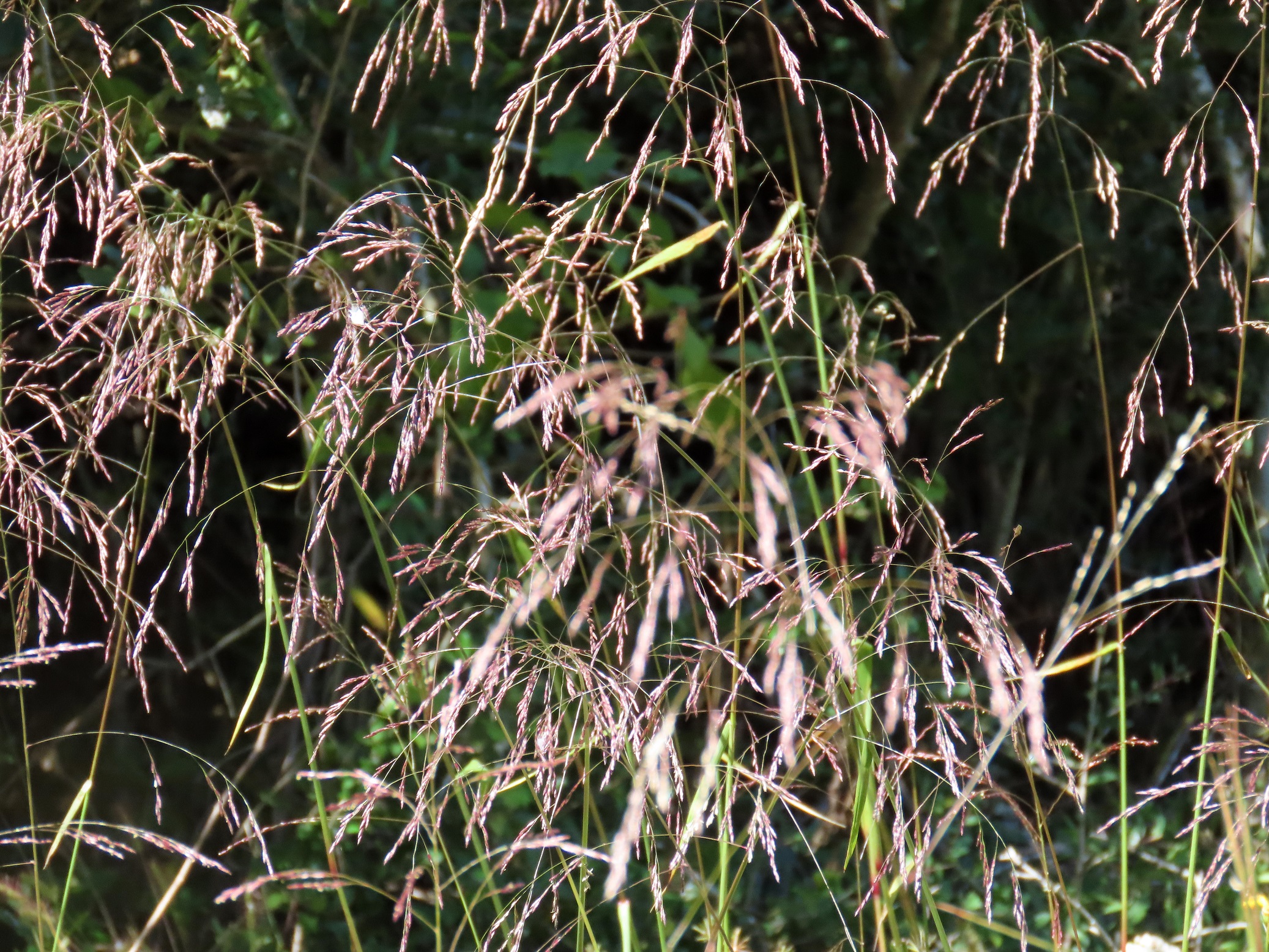




This week for Flora and Fauna Friday it’s the field flown fuchsia floral flag of fall, Purpletop Tridens (Tridens flavus).
Purpletop Tridens is a perennial grass found widely throughout the eastern United States and all of South Carolina. It inhabits open, sunny, sandy areas especially along woodland edges, power lines, and road shoulders. It’s even got mild salt tolerance, letting it grow on barrier islands and in maritime forests. Its leaves grow in long, wide, emerald-green blades up to shin height as singular bunches, sometimes with fringes or flashes of burgundy foliage. Yet, its flowers and seeds are its real namesake. On slender long stalks, reaching from chest to head height, Purpletop Tridens bears a pendulous plume of muted fuchsia seeds, a diffuse arrangement that leans and ungulates in slightest of breeze. Often, many plants grow together within a clearing, creating a midday scene tinted in soft color, reminiscent of a rippling creek bathed in the long red light of sunset. Purpletop Tridens begins to bloom in late August and carries its purple seeds aloft often all the way through November, seeds aging to a pale brass in color with time.
Purpletop Tridens is a warm-season grass, growing and blooming in summer and fall. It’s also a bunch grass, with each plant growing as an individual clump of leaves, rather than producing runners like many of the exotic hay and turf-grasses do. Warm-season bunch grasses are a valuable component of southern grasslands due to the cover, food, and diversity of habitat they provide for wildlife. Growing as bunches, rather than mats, the spaces between these grasses create opportunities for other native plants to grow between the bunches and the umbrella-like shape of the bunch provides indispensable cover to wildlife from the elements and aerial predators, particularly ground dwelling birds like Quail, ground scratchers like sparrows, and a myriad of small mammals and reptiles. The seeds of Purpletop Tridens are high in fat, which grants it its other common name of “Greasegrass” and makes those seeds a nutritious winter food source for rodents and birds. Additionally, Purpletop Tridens is the host plant for a slew of native butterfly species including the Common Wood Nymph (Cercyonis pegala), Little Glassywing (Pompeius verna), and many more of the Grass Skippers of subfamily Hesperiinae. Purpletop Tridens also does well in a garden setting and is a great addition to any native plant friendly lawn.